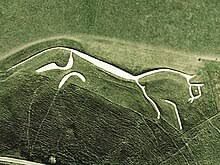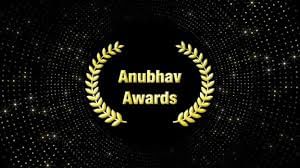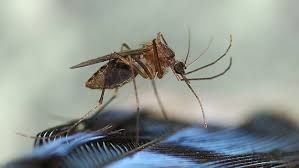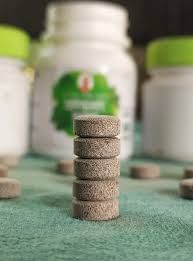UPSC Daily Current Affairs: 28 August 2024 | Current Affairs & Hindu Analysis: Daily, Weekly & Monthly PDF Download
GS3/Environment
Chile’s Atacama Salt Flat sinking due to Lithium Mining
Source: Indian Express

Why in News?
A recent study published in the journal IEEE Transactions on Geoscience and Remote Sensing has revealed that Chile’s Atacama salt flat (Salar de Atacama) is subsiding at a rate of 1 to 2 centimeters annually due to lithium brine extraction. This extraction process involves pumping salt-rich water to the surface and allowing it to evaporate in ponds to collect lithium.
About Salar de Atacama
- This salt flat in Chile has the highest lithium concentration (0.15% by weight) among all brine sources globally.
- Argentina holds over half of the world’s total lithium resources, ranking second in lithium resources, third in reserves, and fourth in production worldwide.
- Salar de Atacama is part of the Lithium Triangle, which includes Uyuni (Bolivia) and Hombre Muerto (Argentina).
Key Findings of the Study
- Researchers analyzed satellite data from 2020 to 2023 to observe changes in the Earth's crust in the salt flat.
- The affected area of subsidence spans approximately 8 km from north to south and 5 km from east to west.
- The study indicates that subsidence is occurring because the rate of lithium brine extraction exceeds the recharge rate of the aquifers, causing the ground to sink.
What is Lithium?
- Lithium is classified as an alkali metal and is often called ‘white gold’ due to its color and value.
- It is a soft, silvery-white metal and is the lightest metal on the periodic table.
- Lithium is typically found in various minerals such as spodumene, petalite, and lepidolite, from which it is extracted and refined.
- Major lithium producers include Australia, Chile, China, and Argentina.
Effects of Lithium Mining on the Environment
- Water Use: Lithium mining from salt flats and brine pools requires significant water, which can deplete local water resources in arid regions.
- Ecological Disruption: The extraction process can alter the chemical balance of the natural environment, impacting local flora and fauna.
- Pollution: Mining and processing lithium can release harmful chemicals into the environment, adversely affecting air and water quality.
GS3/Economy
An either-or approach won’t help quell food inflation
Source: Live Mint

Why in News?
The recently released Consumer Price Index-Combined (CPI-C) data reveals that food inflation, particularly from pulses, vegetables, and cereals, is rising faster than the overall CPI inflation. The CPI-C index is utilized to calculate headline inflation in India, which is compiled and published monthly by the Bureau of Labor Statistics.
- Current Inflation Rates: General CPI inflation is at 3.54%, while food inflation stands notably higher at 5.06%, primarily due to increases in prices of pulses, vegetables, and cereals.
- Inflation Dynamics in the Past: Over the last decade, food inflation has significantly contributed to price volatility. In 52 out of the 124 months analyzed, food inflation exceeded the general CPI rate, indicating a substantial and fluctuating impact on overall inflation.
- Expectations by the Report: The RBI has pointed out that food inflation has a major influence on inflationary expectations, which tend to remain unanchored, often surpassing actual inflation rates.
- Impact of Good Monsoon on Food Production and Inflation:
- India has witnessed a substantial increase in sowing due to a robust monsoon, with paddy sowing rising by 16% to 39 million hectares and pulses by 7% to 12 million hectares as of August 23, 2024.
- The expanded cultivation area for staple crops such as rice and pulses may positively impact the agriculture sector and support government efforts to boost farm productivity despite concerns regarding rising food inflation.
- Present Situation of Inflation in the Agri-Food Sector:
- Food inflation has shown volatility, with several instances of both high and low inflation rates. For instance, food inflation was above 6% in 52 out of 124 months, while it dropped below 2% in 20 months, including periods of negative inflation.
- Supply-side issues such as monsoon variability, crop failures, and government policies like minimum support prices (MSPs) contribute to the disparities between food and retail inflation.
- Excess demand for specific food categories, such as oils and fats, has further fueled higher inflation.
- Regional Disparities: The rural CPI stands at 5.43%, higher than the urban CPI at 4.11%, reflecting the influence of agricultural conditions and market dynamics on rural households.
How Can the Gap Between Farmer and Consumer Be Reduced?
- The government should reconsider its intervention in agricultural markets through MSPs, allowing market forces to determine food prices. This approach could help mitigate production distortions and provide clearer price signals for farmers.
- Government spending should prioritize enhancing agricultural productivity through better technology and irrigation practices, leading to more stable food supplies and prices.
- Implementing strategies to eliminate middlemen in the supply chain can narrow the gap between what farmers receive and what consumers pay.
- Improving infrastructure for storage and transportation can help minimize food wastage and ensure efficient delivery of food products to consumers, further stabilizing prices.
Conclusion:
There is a pressing need to promote the adoption of advanced agricultural technologies and sustainable farming practices to boost productivity and mitigate the effects of supply-side disruptions, ensuring consistent food supplies and stable prices.
Mains PYQ:
Do you agree with the view that steady GDP growth and low inflation have left the Indian economy in good shape? Give reasons in support of your arguments. (UPSC IAS/2017)
GS1/Geography
What are Geoglyphs?
Source: The Print

Why in News?
The Maharashtra government has recently designated 1,500 geoglyphs located across 70 sites within a 210-square-kilometre area of Ratnagiri district as a 'protected monument.'
About Geoglyphs:
- A geoglyph is a large design or motif created on the ground.
- These structures are typically made from persistent materials found in the landscape, such as:
- Stones
- Gravel
- Geoglyphs are usually over four meters in length.
- They can be challenging to detect from the surface, but are easily visible from an aerial perspective.
- There are two main types of geoglyphs:
- Positive Geoglyphs: Formed by arranging materials on the ground, similar to petroforms, which are outlines made with boulders.
- Negative Geoglyphs: Created by removing portions of the earth's surface to reveal differently colored or textured soil, akin to petroglyphs.
- Another variation is the arborglyph, which involves planting vegetation in specific patterns. This type takes years to become visible, depending on plant growth.
- Chalk giants are a specific kind of geoglyph, where designs are carved into hillsides, exposing the underlying bedrock.
Examples:
- The most renowned geoglyphs include:
- The Nasca Lines in Peru
- The horse and human figures carved into hillsides in southern England, such as the Uffington White Horse and the Cerne Giant.
GS3/Science and Technology
What is a Quasar?
Source: WION

Why in News?
Using the European Southern Observatory's (ESO) Very Large Telescope (VLT), astronomers recently identified a quasar described as the "brightest of its kind" and the "most luminous object ever observed.
About Quasar:
- A quasar is an extremely active, luminous type of Active Galactic Nucleus (AGN).
- An AGN is essentially a supermassive black hole that is actively consuming matter at the center of a galaxy.
- While all quasars are classified as AGNs, not all AGNs meet the criteria to be termed quasars.
- The term "quasar" is short for "quasi-stellar radio source," which reflects how they were initially discovered in 1963 as objects resembling stars that emit radio waves.
- Quasars are powerful emitters of X-rays and visible light, making them the most potent type of X-ray source identified to date.
- They rank among the most luminous and energetic objects in the universe.
How are they formed?
- Quasars are believed to arise in regions of the universe with a significantly higher density of matter compared to average areas.
- An active galaxy features a central supermassive black hole that is consuming substantial amounts of matter.
- The infall of material into the black hole is so high that it cannot all enter simultaneously, resulting in the formation of a spiraling accretion disk.
- This disk comprises large clouds of gas that spiral inward, with the inner parts moving faster than the outer layers, similar to how planets orbiting a star behave.
- This motion creates shear forces that cause gas clouds to collide, moving at speeds between 10% to over 80% of the speed of light.
- Friction from these fast-moving gas clouds produces heat, causing the disk to reach temperatures of millions of degrees, which results in a bright glow.
- Some material from the disk is also expelled outward in a highly luminous jet, which is magnetically collimated.
- The combination of the hot accretion disk and the jet makes the active galaxy's nucleus shine intensely, allowing it to be visible across vast cosmic distances.
- The brightest quasars can outshine all stars in their host galaxies, making them detectable even billions of light-years away.
GS2/Governance
ANUBHAV AWARDS, 2024
Source: AIR

Why in News?
The Minister of State for Personnel, Public Grievances, and Pensions has conferred the Anubhav Awards 2024.
Details
- Purpose: To honor the efforts of retired officials in nation-building and to capture the administrative history of India through their documented narratives.
- Portal Launch: The Anubhav portal was initiated in March 2015.
- Organizing Body: Managed by the Ministry of Personnel, Public Grievances & Pensions, under the Department of Pension & Pensioners’ Welfare.
Objectives
- Create a comprehensive database of valuable suggestions and work experiences.
- Engage retiring employees in contributing to nation-building efforts.
- Assist Ministries/Departments in considering useful and replicable suggestions from the retiring workforce.
Criteria
- Eligible participants include retiring Central Government employees and pensioners who may submit their Anubhav write-ups from 8 months before retirement up to 1 year after retirement.
Award Process
- Submitted write-ups undergo assessment by the relevant Ministries/Departments, are published, and then shortlisted for the Anubhav Awards and Jury Certificates.
Awards and Recognition
- ANUBHAV Awardees: Recipients receive a medal, a certificate, and a cash prize of ₹10,000.
- Jury Certificate Winners: These winners are awarded a medal and a certificate.
PYQ:
Consider the following statements regarding Bharat Ratna and Padma Awards:
1. Bharat Ratna and Padma Awards are titles under Article 18(1) of the Constitution of India.
2. Padma Awards, instituted in 1954, were suspended only once.
3. The number of Bharat Ratna Awards is limited to a maximum of five in any given year.
Which of the above statements are not correct?
(a) 1 and 2 only
(b) 2 and 3 only
(c) 1 and 3 only
(d) 1, 2 and 3
GS3/Health
Advancing Equity, From COVID-19 to Mpox
Source: The Hindu

Why in News?
Less than five years after the COVID-19 pandemic, the world is facing another major global health threat with the emergence of mpox (formerly monkeypox).
- This situation has escalated into an international emergency, prompting declarations from both the World Health Organization (WHO) and the Africa Centres for Disease Control and Prevention (AfricaCDC).
- It is crucial to examine the implications of the mpox outbreak, stressing the need for an equitable and coordinated global response, along with lessons learned from the COVID-19 pandemic.
The Emergence of Mpox as a Global Health Crisis
- Mpox has quickly evolved from a regional issue in the Democratic Republic of the Congo (DRC) to a global health concern.
- WHO's designation of mpox as a Public Health Emergency of International Concern (PHEIC) is significant, especially following recent amendments to the International Health Regulations (IHR) that now emphasize equity as a fundamental principle.
- Although these amendments will be implemented in 2025, the global response to mpox must prioritize equity from the beginning.
- This principle is vital to ensure that all nations, particularly those in the Global South, receive adequate support and resources to tackle the outbreak.
- The PHEIC declaration aims to foster international cooperation and quick mobilization of resources.
- The global community's response to this declaration will influence how future public health emergencies are managed, especially considering lessons from the COVID-19 pandemic.
Lessons from the COVID-19 Pandemic on Vaccine Equity and Manufacturing
- The COVID-19 pandemic highlighted significant inequities in vaccine distribution.
- High-income countries quickly secured large stocks of vaccines through advance purchase agreements with pharmaceutical companies, ensuring swift access for their populations.
- This led to vaccine hoarding, restricting availability for lower-income nations.
- Despite initiatives like COVAX aimed at providing equitable access to COVID-19 vaccines, distribution remained heavily biased in favor of wealthier countries.
- By mid-2021, many high-income nations had vaccinated a large part of their populations, while many low-income countries had barely initiated their vaccination efforts.
- The inequity was worsened by the lack of local vaccine manufacturing capabilities in the Global South.
- Countries without the necessary infrastructure or expertise were reliant on external supplies, which were often delayed or insufficient.
- This dependency underscored the vulnerability of these nations during global health crises, highlighting the need for a self-sufficient approach to vaccine production.
Lessons on Technology Transfer in Addressing Inequities
- A key lesson from the COVID-19 pandemic is the importance of technology transfer for equitable vaccine distribution.
- Technology transfer encompasses sharing knowledge, expertise, and patents necessary for local vaccine production.
- This process is essential for empowering lower-income countries to manufacture vaccines independently, reducing reliance on external sources and enhancing their public health response.
- However, during the COVID-19 pandemic, technology transfer was limited, with many pharmaceutical firms and high-income countries hesitant to share intellectual property and manufacturing knowledge.
- This reluctance was driven by concerns over protecting commercial interests and maintaining production quality.
- The result was a considerable delay in lower-income countries' ability to produce vaccines locally, prolonging the inequities in vaccine access.
The Case of Oxford/AstraZeneca and India’s Role
- The Oxford/AstraZeneca vaccine, known as Covishield in India, exemplifies a successful case of technology transfer.
- The Serum Institute of India (SII), the largest vaccine manufacturer globally, was granted rights to produce Covishield under a licensing agreement.
- This arrangement enabled mass production and distribution of the vaccine, both within India and to many other low- and middle-income countries.
- This partnership showcased the potential of technology transfer to improve vaccine access, despite limitations imposed by the global intellectual property framework.
Mpox and the Opportunity for a Different Approach
- The global community now faces the mpox outbreak with an existing vaccine, MVA-BN (Jynneos), providing an opportunity to apply lessons from COVID-19.
- Unlike the COVID-19 situation, where vaccines were developed from scratch, the MVA-BN vaccine is already approved and in production.
- This offers a head start in combating the outbreak, contingent on not repeating past mistakes.
Challenges and Possible Solutions
- The immediate challenge is ensuring that the MVA-BN vaccine is produced in sufficient quantities and distributed equitably.
- It is vital to prioritize technology transfer to countries capable of producing vaccines but lacking expertise or resources.
- India, with its strong pharmaceutical industry and vaccine production experience, plays a crucial role in this effort.
- Indian manufacturers like SII, Bharat Biotech, and Zydus Cadila possess the infrastructure and expertise to scale up MVA-BN vaccine production, provided they receive the needed technological support.
Way Forward
- Expanding vaccine manufacturing in the Global South is essential to address vaccine inequities.
- The COVID-19 pandemic revealed that dependence on a few manufacturers in high-income countries leads to delays and bottlenecks in vaccine distribution during global demand surges.
- Diversifying manufacturing across various regions can create a more resilient supply chain capable of withstanding public health emergencies.
- Investing in infrastructure and capacity building for manufacturers in lower- and middle-income countries (LMICs) is critical for the mpox vaccine.
- These investments should focus not only on physical infrastructure but also on training initiatives to help local manufacturers meet international standards.
- Empowering LMICs to produce vaccines can foster a more equitable and self-sufficient health system, reducing disparities seen in previous pandemic responses.
- Beyond practical benefits, there exists a strong ethical imperative for vaccine equity.
- The COVID-19 pandemic demonstrated that vaccine inequity is not merely a moral failure but also a strategic error.
- Thus, ensuring equitable access to the mpox vaccine is essential for fairness and global health security.
Conclusion
- The COVID-19 pandemic taught harsh lessons about vaccine inequity and the limitations of a global health system favoring high-income countries.
- As the world confronts the mpox outbreak, there is an urgent need to apply these lessons and adopt a different approach.
- The mpox situation presents a chance to rectify past mistakes and establish a model for future public health responses that is rooted in equity and solidarity.
GS3/Health
What is Eastern Equine Encephalitis (EEE)?
Source: Times of India

Why in News?
A person in New Hampshire, United States, has died after contracting the rare mosquito-borne Eastern Equine Encephalitis (EEE) virus, health officials reported recently.
About Eastern Equine Encephalitis (EEE):
- EEE is an extremely rare but serious infection caused by the Eastern Equine Encephalitis virus (EEEV).
- This virus leads to encephalitis, which is the inflammation of the brain.
- EEEV has the potential to infect various animals, including mammals, birds, reptiles, and amphibians.
Transmission
- The virus spreads to mammals, including humans and horses, through the bite of infected mosquitoes that feed on both birds and mammals.
- Human cases of EEE are uncommon, but when they occur, they can lead to severe illness.
Symptoms
- Some individuals infected with EEEV may remain asymptomatic, meaning they do not show any symptoms.
- Symptoms typically manifest 4 to 10 days after being bitten by an infected mosquito.
- In severe cases, infection can start with sudden headache, high fever, chills, and vomiting.
- This may escalate into confusion, seizures, inflammation of the brain, and even coma.
- The mortality rate for those who become ill from EEE is about 30%, and many survivors suffer long-term neurological damage.
Treatment
- Currently, there are no vaccines available to prevent EEE infection in humans.
- There is also no specific treatment for EEE disease.
- Treatment primarily involves supportive care, which may include hospitalization, respiratory support, intravenous fluids, and measures to prevent secondary infections.
GS2/Polity
Preventing Misleading Ads About Ayurvedic, Siddha and Unani Drugs
Source: Deccan Herald

Why in News?
The Supreme Court of India has temporarily halted a notification from the Ministry of AYUSH that removed Rule 170 from the Drugs and Cosmetics Rules, 1945. This rule was essential as it granted authorities the power to take action against misleading advertisements related to Ayurvedic, Siddha, and Unani medicines.
Drug Regulation in India:
The Drugs and Cosmetics Act, 1940 and Rules 1945:
- The Act assigns various responsibilities to both central and state regulators regarding the oversight of drugs and cosmetics.
- Central Drugs Standard Control Organisation (CDSCO):
- Acts as the National Regulatory Authority (NRA) of India under the Ministry of Health & Family Welfare.
- Responsible for the following:
- Approval of Drugs.
- Conducting Clinical Trials.
- Laying down quality standards for Drugs.
- Monitoring the quality of imported Drugs.
- Coordinating activities of State Drug Control Organisations.
- CDSCO, along with state regulators, also oversees the licensing of critical Drug categories, such as vaccines and sera.
- Plans have been announced to bring all medical devices, including implants and contraceptives, under CDSCO regulation.
- Drugs Controller General of India (DCGI):
- Leads the CDSCO and is responsible for approving licenses for specific categories of drugs, including blood products and vaccines.
- Sets standards for the manufacturing, sale, import, and distribution of drugs in India.
About the Ayurveda, Siddha and Unani Drugs:
- Definition:
- According to the Drugs and Cosmetics Act 1940, Ayurvedic, Siddha, and Unani drugs are defined as medicines used for treating, preventing, or diagnosing diseases in humans or animals.
- Regulation:
- The Act establishes the Ayurvedic, Siddha, and Unani Drugs Technical Advisory Board (ASUDTAB) to set standards for these drugs.
- The Central Government can modify rules concerning these drugs after consulting the board.
- Schedule T under Drugs and Cosmetics Act 1940:
- Schedule T outlines the Good Manufacturing Practices for Ayurvedic, Siddha, and Unani Medicines.
The SC’s Efforts to Protect Consumers from Being Trapped by Misleading Ads:
- In a contempt case involving Patanjali Ayurved Limited, the Supreme Court directed that advertisers must provide self-declarations confirming they are not making false claims about their products prior to media promotion.
- However, the Ministry of AYUSH later announced that Rule 170 of the Drugs and Cosmetics Rules, 1945, would no longer be in effect, based on a recommendation from ASUDTAB.
- The Supreme Court subsequently stayed the Ministry's notification, asserting that its removal of Rule 170 contradicted previous court directions.
GS2/Polity
Report reveals minimal use of Plea Bargaining in Courts
Source: The Hindu

Why in news?
According to a report by the Ministry of Law and Justice, only 0.11% of cases were settled through “plea bargaining” in 2022.
Key Findings of the Report:
- In 2022, only 19,135 out of 17,052,367 cases (approximately 0.11%) in Indian courts were resolved through plea bargaining, indicating its very limited application.
- Despite existing legal restrictions, there were 119 instances of plea bargaining in cases of crimes against women and 4 cases under the Protection of Children from Sexual Offences Act (POCSO), which highlights a deviation from intended exclusions.
What is Plea Bargaining?
- Definition: Plea bargaining is a legal process that allows an accused person to negotiate with the prosecution for a reduced punishment by pleading guilty to a lesser offense. This involves discussions prior to trial regarding the charges or sentence.
- Provision in India:
- Introduced in 2006 as part of the Criminal Law (Amendment) Act, 2005, under Chapter XXI-A (Sections 265A to 265L).
- Plea bargaining is applicable only to offenses that do not carry the death penalty, life imprisonment, or a sentence exceeding seven years.
- It is not applicable to crimes affecting socio-economic conditions or those committed against children under 14 years of age, focusing solely on offenses punishable by up to seven years.
- Procedure in India:
- Only the accused can initiate the plea bargaining process.
- The accused must submit an application to the court to commence the process. If the court permits, a meeting with the prosecutor, investigating officer, and, if applicable, the victim is held to reach a satisfactory resolution.
- This process may include potential reduced sentences and compensation payments to the victim from the accused.
- Benefits Offered:
- Plea bargaining expedites trials, lowers litigation costs, and mitigates uncertainty regarding case outcomes.
- It helps alleviate prison overcrowding and reduces prolonged detentions of undertrials.
- Offers offenders an opportunity for rehabilitation and a fresh start.
- Could enhance conviction rates, similar to trends observed in the USA.
- The Malimath Committee (2000) recommended it for its potential to significantly improve conviction rates and ensure quicker trials.
PYQ:
[2021] With reference to India, consider the following statements:
1. Judicial custody means an accused is in the custody of the concerned magistrate and such accused is locked up in police station, not in jail.
2. During judicial custody, the police officer in charge of the case is not allowed to interrogate the suspect without the approval of the court.
Which of the statements given above is/are correct?
(a) 1 only
(b) 2 only
(c) Both 1 and 2
(d) Neither 1 nor 2
GS3/Defence & Security
Telegram CEO arrested in Paris
Source: Economic Times

Why in News?
Pavel Durov, the CEO and founder of the messaging platform Telegram, was recently detained in Paris under accusations related to the use of his app for illegal activities, including drug trafficking and distributing child sexual abuse material.
France’s case against Telegram and Durov
- The French authorities have initiated legal actions against Telegram and its CEO, Pavel Durov.
- Allegations against Durov include complicity in drug trafficking and providing support for terrorism.
Response of the event
- Pavel Durov was apprehended at Le Bourget airport as part of an ongoing investigation into Telegram.
- The investigation was triggered by twelve alleged violations, including failure to comply with requests for data related to illegal activities.
Founded by
- Telegram was established in 2013 by Pavel Durov and his brother, Nikolai Durov.
- Pavel Durov previously launched VKontakte, Russia's largest social networking site, but left Russia in 2014 due to governmental pressure to censor content.
- Currently, Telegram operates out of Dubai, which Durov believes is a neutral ground that upholds its commitment to user privacy and free speech.
About
- Telegram is a popular messaging application allowing private conversations, group chats, and large channels for broadcasting messages.
- In contrast to WhatsApp, which limits group sizes to 1,024 participants, Telegram permits up to 200,000 members in a single group, which raises concerns regarding misinformation dissemination.
- Although Telegram offers end-to-end encryption, it is not activated by default for all chats, and this feature is limited to "secret chats." In contrast, competitors like Signal automatically encrypt all communications.
- With over 950 million active users, Telegram is significantly utilized in France, including by government officials, but has also been employed by criminals and drug traffickers.
Pavel Durov’s Arrest and Russian-Western Relations
- Durov's detention has created tension between Russia and Western nations, with Russian officials labeling the arrest as politically motivated.
- The Kremlin and the Russian Embassy in Paris have expressed concerns regarding the denial of consular access to Durov.
Tension Between Governments and Tech Companies
- The incident underscores the ongoing struggle between governments and technology firms regarding the balance between free speech and the regulation of illegal activities.
- Critics, including whistleblower Edward Snowden, have denounced the actions of the French government, viewing the arrest as an infringement on fundamental human rights.
Durov’s Neutrality Stance
- Durov has consistently promoted Telegram as a neutral platform, resisting governmental pressures to engage in geopolitical issues.
- He has reaffirmed the platform's dedication to user privacy and freedom of speech.
Parallels with Other Tech Giants
- The situation involving Telegram reflects broader tensions between governments and tech companies such as Meta and the former Twitter (now X).
- Governments worldwide are increasingly clashing with these platforms over the need to regulate harmful content.
- For example, in Brazil, X ceased operations after refusing to comply with a Supreme Court directive, citing concerns over transparency and free speech.
- In India, WhatsApp faced pressure to tackle misinformation but resisted compromising user privacy by disclosing message sources.
GS3/Economy
Over 3 crore PM Jan Dhan accounts to be opened in FY25
Source: Indian Express

Why in News?
Finance Minister Nirmala Sitharaman announced that the government plans to open over 3 crore accounts under the Pradhan Mantri Jan Dhan Yojana (PMJDY) as it marks the 10th anniversary of this significant initiative.
News Summary
- The Pradhan Mantri Jan Dhan Yojana (PMJDY) is a prominent financial inclusion initiative launched by the Government of India on August 28, 2014.
- This scheme aims to provide affordable financial services such as banking, savings, remittances, credit, insurance, and pensions to the unbanked population of India.
- It stands as one of the largest financial inclusion efforts globally, aiming to ensure that every household has access to essential financial services.
Objectives of the Scheme:
- Financial Inclusion: The main goal of PMJDY is to ensure that every household in India has at least one bank account, integrating the unbanked segments into the formal financial system.
- Access to Financial Services: The initiative seeks to offer a variety of financial services, including basic savings accounts, need-based credit, remittances, insurance, and pensions.
Key Features of the Scheme:
- Zero Balance Accounts: Beneficiaries can open basic savings bank accounts without needing to maintain a minimum balance, although a minimum balance is required for a cheque book.
- RuPay Debit Card: Each account holder receives a RuPay debit card for cash withdrawals and payments, which includes an in-built accident insurance cover of Rs. 1 lakh (increased to Rs. 2 lakh for accounts opened post-August 2018).
- Overdraft Facility: After six months of satisfactory operations, PMJDY accounts are eligible for an overdraft facility of up to Rs. 10,000, providing a credit line for urgent financial needs.
- Life Insurance Cover: Account holders may receive a life insurance cover of Rs. 30,000 if they open their accounts before a specific date and meet other eligibility requirements.
- Direct Benefit Transfer (DBT): PMJDY accounts are linked to the DBT scheme, allowing beneficiaries to receive government benefits directly into their bank accounts.
- Mobile Banking Facility: The scheme includes basic mobile banking services, enabling account holders to check balances, transfer funds, and conduct other transactions via mobile devices.
Impact & Achievements:
- As of 2024, there are over 53 crore active PMJDY accounts, with a total deposit balance of ₹2.3 lakh crore, significantly enhancing the financial inclusion of unbanked households.
- Women constitute 55% of PMJDY account holders, fostering gender equality by granting women access to financial resources.
- Approximately 67% of accounts are located in rural and semi-urban regions, ensuring financial services reach underserved areas.
Major Challenges:
- Dormant Accounts: Many Jan Dhan accounts are inactive or hold low balances. Particularly in rural areas, account holders may not utilize their accounts due to lack of awareness or limited access to banking services.
- Limited Financial Literacy: A significant portion of the population, especially in rural settings, lacks financial literacy, impacting their ability to use services like overdrafts, insurance, and pensions effectively.
- Infrastructure Challenges: In remote areas, there is often inadequate banking infrastructure, such as branches and ATMs, which hinders access to banking services and limits the reach of mobile banking.
- Operational Burden on Banks: The large-scale opening of Jan Dhan accounts places an operational strain on banks, particularly public sector banks, which face challenges in managing many low-balance accounts.
|
63 videos|5408 docs|1146 tests
|
FAQs on UPSC Daily Current Affairs: 28 August 2024 - Current Affairs & Hindu Analysis: Daily, Weekly & Monthly
| 1. What is causing the Atacama Salt Flat in Chile to sink? |  |
| 2. How can food inflation be addressed effectively? |  |
| 3. What are Geoglyphs? |  |
| 4. What is a Quasar? |  |
| 5. What is Eastern Equine Encephalitis (EEE)? |  |
















